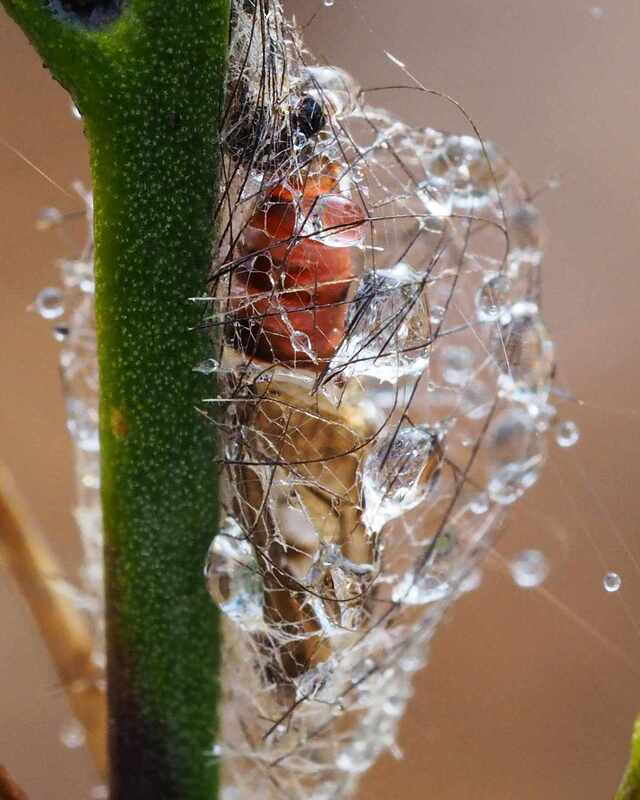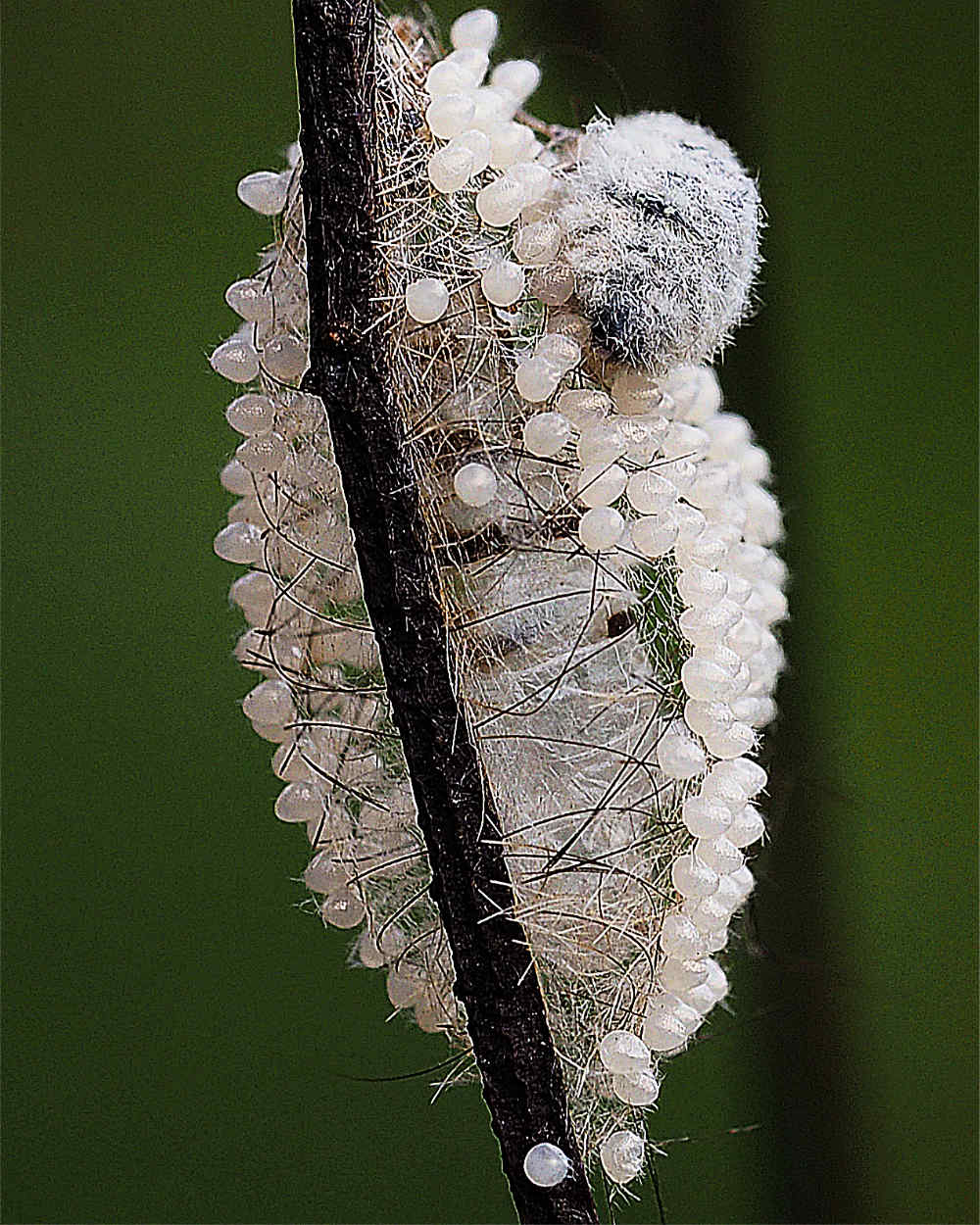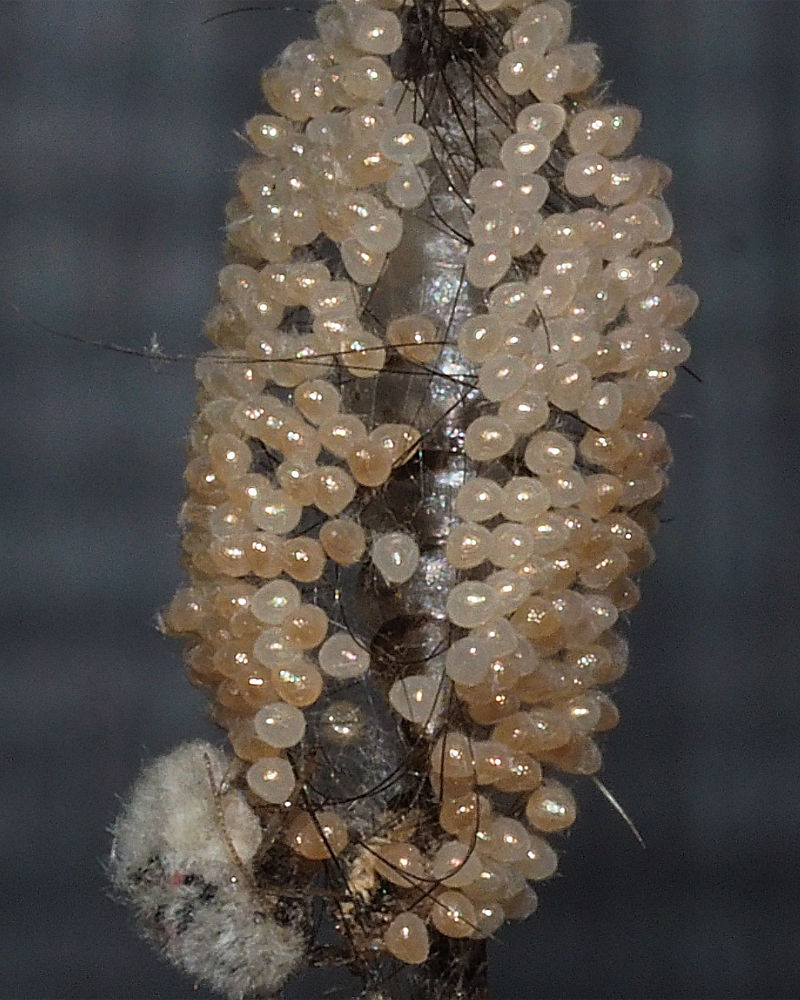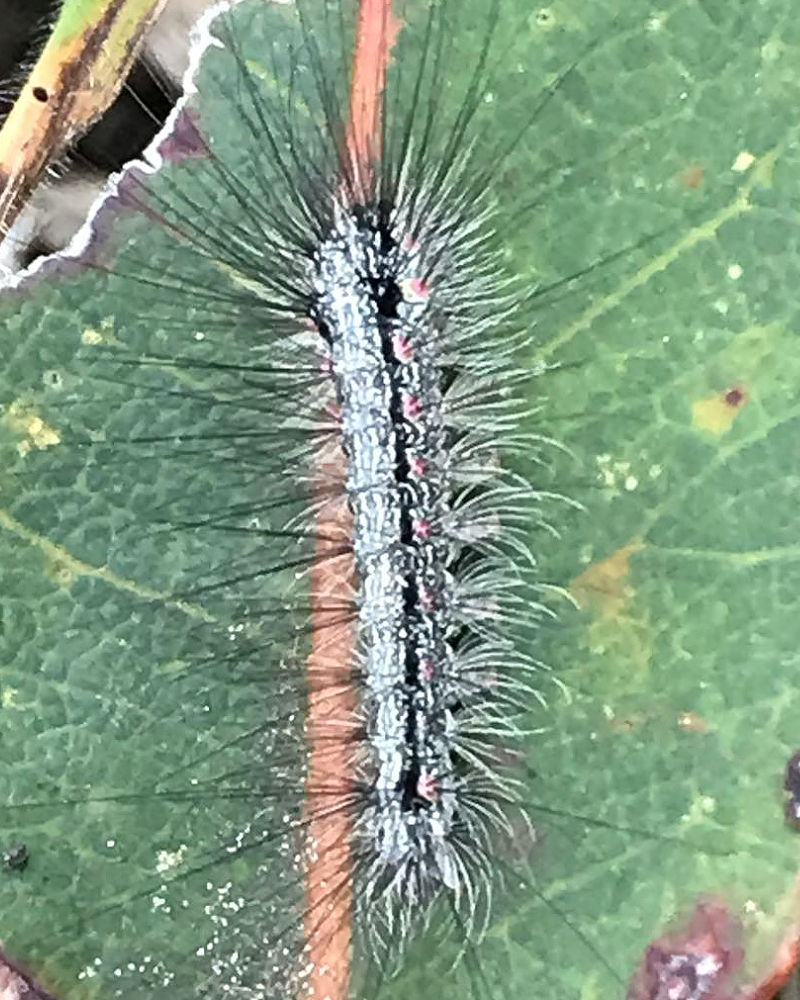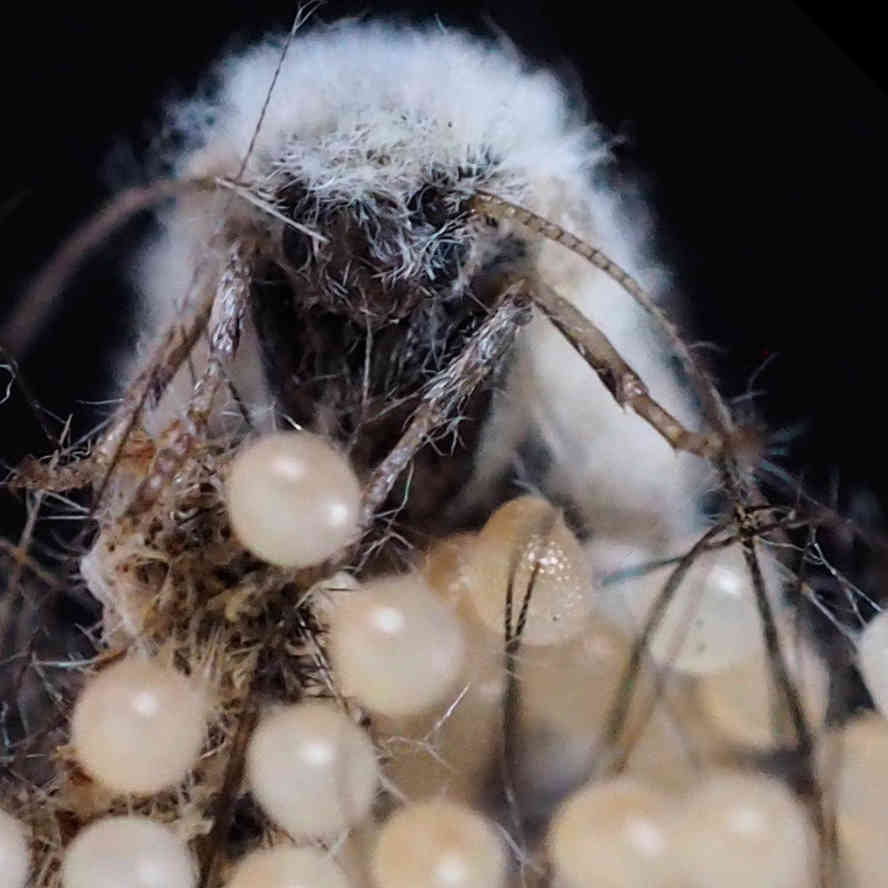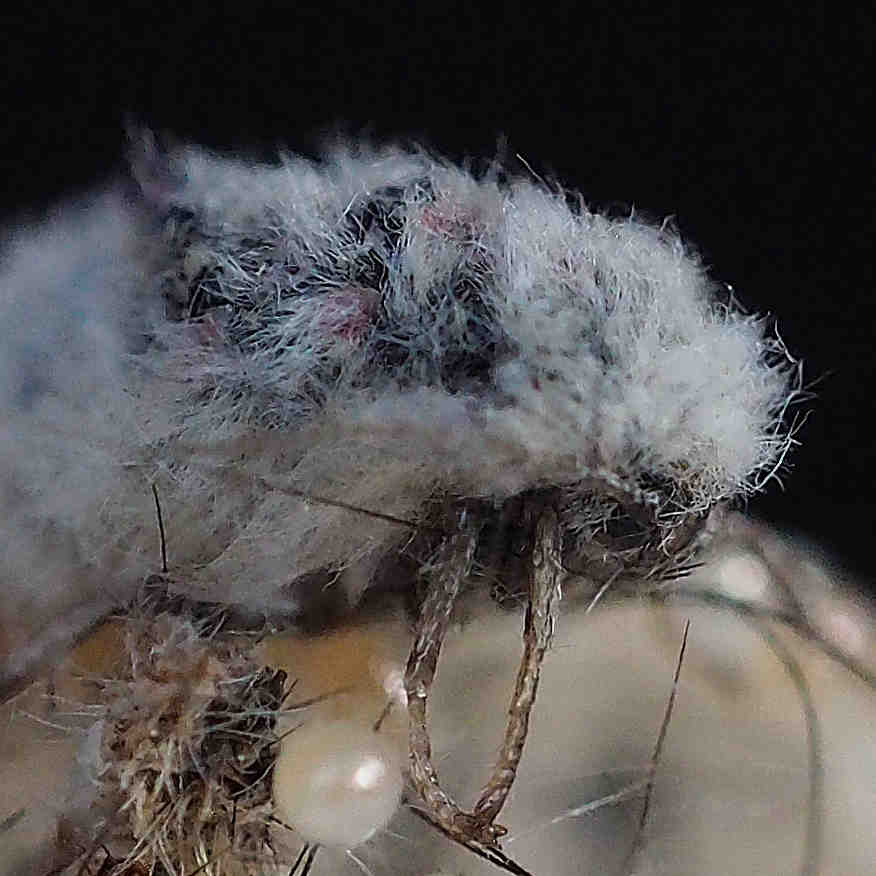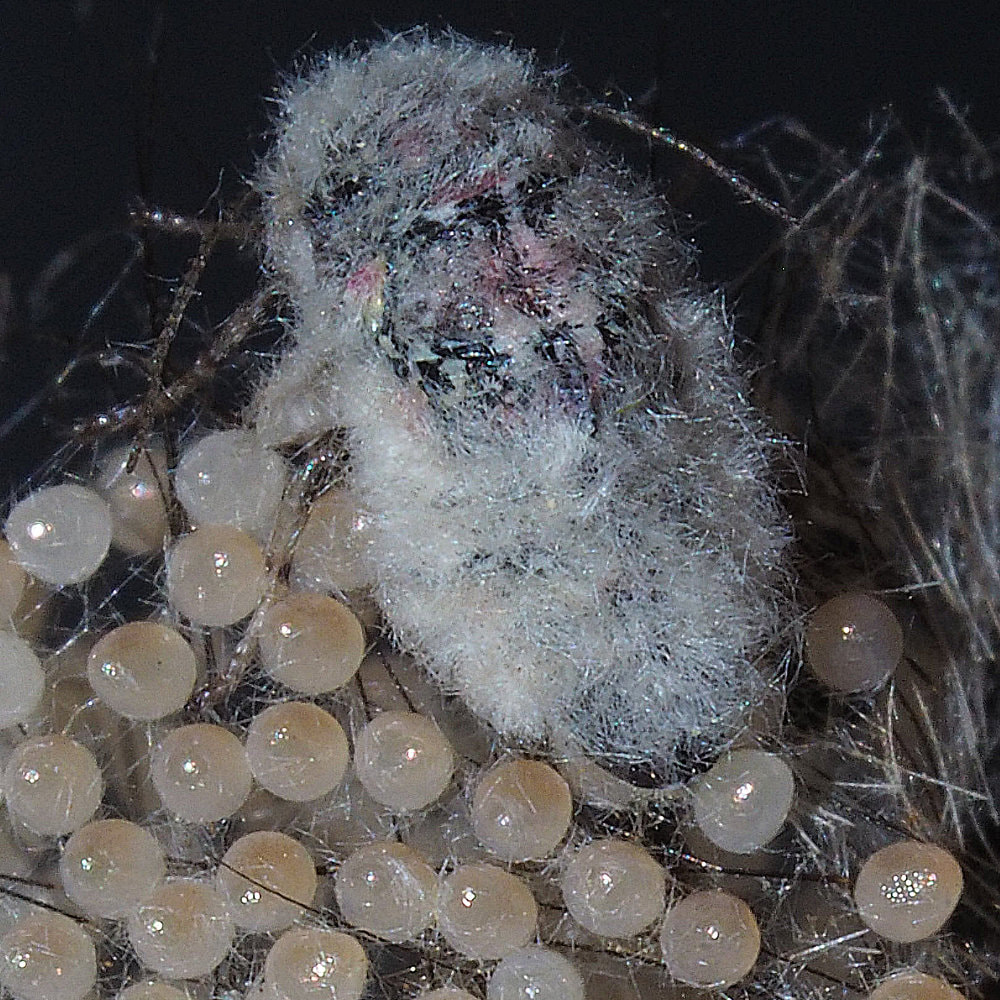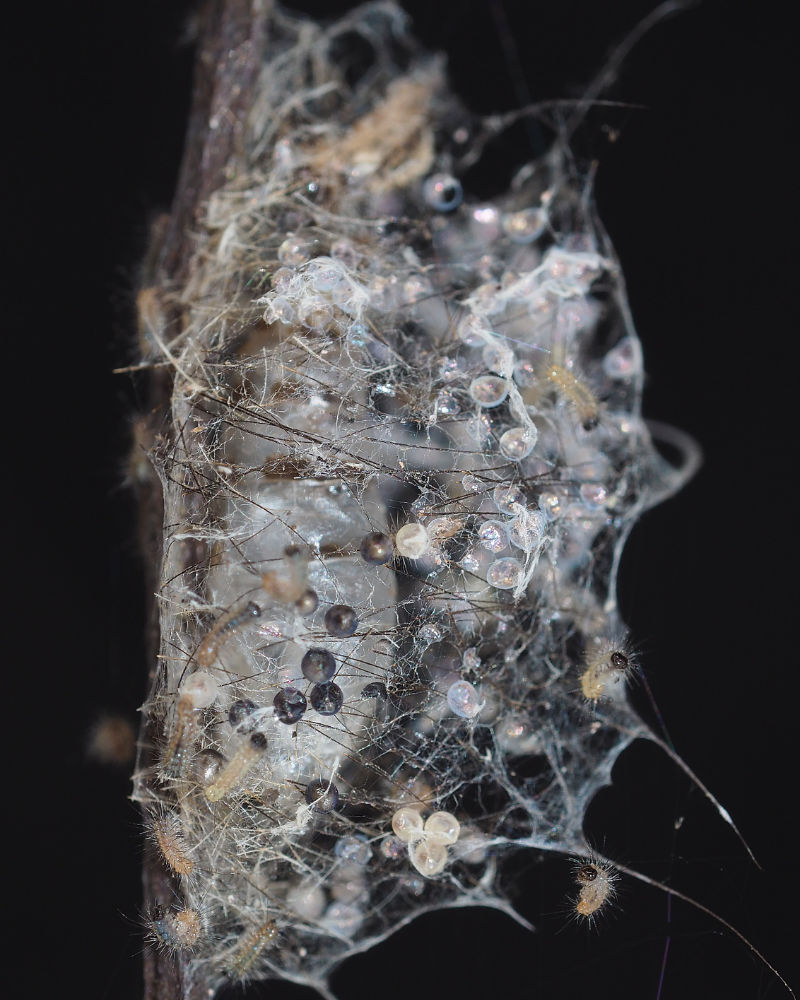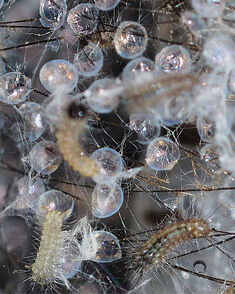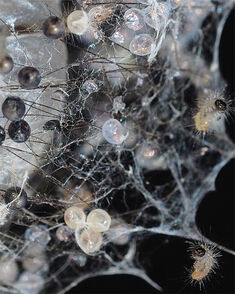In mid-October I saw a small gleaming structure like a pearl-laden pendant attached to a dead quandong twig that I thought was an empty pupal case. The pearls were eggs accompanied by a dumpy insect that I thought was a type of scale. Wrong again!
The insect was a flightless female moth, that had laid the eggs after emerging from a pupal case inside the silky and hairy frame.
- This Butterfly House blog. Clouded Footman Anestia ombrophanes
- My Pestguide Bioblitz report: They are the caterpillars of a very interesting moth, Marbled Footman, Anestia ombrophanes Meyrick, 1886 or Anestia semiochrea (Butler, 1886) (Lepidoptera: Erebidae). The two species may well be the same species described about the same time by two entomologists. The species is native and widespread but rarely observed in the Southern part of Australia. The caterpillars are black with a complex pale-yellow pattern and a row of pink spots on each sides and covered in long black hairs. They feed on primitive plants such as: Lichen, Green Algae (Bracteacoccus species) and Black Algae (Gloeocapsa magma). The adult female has a length of about 1 cm. She is wingless and flightless and has a large grey body with pink spots. The female stays near her cocoon, and the male copulates with her there.
As strange as it seems, flightless females can carry more eggs than those with wings but need to be well camouflaged to avoid predators and have a good dispersal mechanism for the many emerged young.
I took the egg mass home to take better closeup images, and discovering that the female was still alive, left it in a safe place.
When I looked again a week later, there were lots of teeny caterpillars hanging down from silken threads, presumably waiting for a wind to disperse them.
I quickly made up a buffet of various plant materials but suspect that they all crawled away. Such is life.
